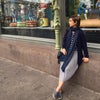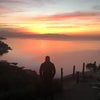Petergof (русский. Петерго́ф) or Peterhof (Dutch/German for "Peter's Court"), known as Petrodvorets (Шаблон:Lang) from 1944 to 1992, is a municipal town within Petrodvortsovy District of the federal city of Saint Petersburg, on the southern shore of the Gulf of Finland. Population: Шаблон:Ru-census
The town hosts one of two campuses of Saint Petersburg State University and the Petrodvorets Watch Factory, one of the leading Russian watch manufactures. A series of palaces and gardens, laid out on the orders of Peter the Great, and sometimes called the "Russian Versailles", is also situated there. The palace-ensemble along with the city center is recognized as a UNESCO World Heritage Site.
In the time of Peter the Great, the sea floor just north of the Petergof site and to the east toward St. Petersburg was too shallow for either commercial ships or warships. However, to the west of Petergof, the sea floor dropped off to be deep enough for sea vessels. Accordingly, when Peter the Great decided to build St. Petersburg at the eastern end of the Gulf of Finland, he first captured the Kotlin Island clearly visible from the Petergof site just to the northeast in the middle of the Gulf. At Kotlin Island he would build the commercial harbor for St. Petersburg as well as the Kronshtadt fortifications across the Шаблон:Km to mi of shallow sea to provision and defend the Navy that he would build.
Peter the Great first mentions the Petergof site in his journal in 1705, during the Great Northern War, as a good place to construct a landing for use in traveling to and from the island fortress of Kronshtadt. In 1714, Peter began construction of the Monplaisir ("my pleasure") Palace based on his own sketches of the palace that he wanted close to the shoreline. This was Peter's Summer Palace that he would use on his way coming and going from Europe through the harbor at Kronshtadt. On the walls of this seacoast palace hung hundreds of paintings that Peter brought from Europe and allowed to weather Russian winters without heat together with the dampness of being so close to the sea. And in the seaward corner of his Monplaisir Palace, Peter made his Maritime Study from which he could see Kronshtadt Island to the left and St. Petersburg to the right. Later, he expanded his plans to include a vaster royal château of palaces and gardens further inland, on the model of Versailles. Each of the Tsars after Peter expanded on the inland palaces and gardens of Peterhof, but the major contributions by Peter the Great were completed by 1725. Peter had also entertained plans of a similar palace at Strelna, a short way to the east, but these plans were abandoned.
Peterhof originally appeared quite differently than it does today. Many of the fountains had not yet been installed. The entire Alexandrine Park and Upper Gardens did not exist—the latter was used to grow vegetables, and its ponds, then numbering only three, were used for growing fish. The Samson Fountain and its massive pedestal had not yet been installed in the Sea Channel, and the channel itself was used as a grand marine entrance into the complex.
Perhaps the most important change augmenting Peter's design was the elevation of the Grand Palace to central status and prominence. The Grand Palace was originally called simply 'Upper', and was hardly larger than any of the other structures of the complex. The addition of wings, undertaken between 1745 and 1755, was one of the many projects commissioned from the Italian architect Bartolomeo Rastrelli by Elizabeth of Russia. Likewise, the Grand Cascade was more sparsely decorated when initially built.
The augmentation of Peterhof's original fountains and the addition of new ones continued well into the 19th century.
Peterhof, like Tsarskoye Selo, was captured by German troops in 1941 and held until 1944. In the few months that elapsed between the outbreak of war in the west and the appearance of the German Army, employees were only able to save a portion of the treasures of the palaces and fountains. An attempt was made to dismantle and bury the fountain sculptures, but three-quarters, including all of the largest ones, remained in place. The occupying forces of the German Army largely destroyed the palace grounds.Шаблон:Citation needed Many of the fountains were destroyed, and the palace was partially exploded and left to burn. Restoration work began almost immediately after the end of the war and continues to this day. It progressed remarkably quickly, and is still being carried out.
The name the city was changed to Petrodvorets ("Peter's Palace") in 1944 as a result of wartime anti-German sentiment and propaganda, but the original name was restored in 1997 when Petrodvorets was split into Petergof and Strelna. This renaming, however, was not finalized until 2009.
In 2003, St. Petersburg celebrated its 300th anniversary. As a result, much of the building and statuary in Petergof has been restored and new gilt-work abounds.
The dominant natural feature of Peterhof Grand Palace is a sixteen-meter-high bluff lying less than a hundred meters from the shore. The so-called Lower Gardens (Nizhny Sad), at Шаблон:Km2 to mi2 comprising the better part of the palace complex land area, are confined between this bluff and the shore, stretching east and west for roughly Шаблон:M to ft. The majority of Peterhof's fountains are contained here, as are several small palaces and outbuildings. East of the Lower Gardens lies the Alexandria Park with 19th-century Gothic Revival structures such as the Kapella.
Atop the bluff, near the middle of the Lower Gardens, stands the Grand Palace (Bolshoy Dvorets). To the south of it are the comparatively small Upper Gardens (Verhny Sad). Upon the bluff's face below the Palace is the Grand Cascade (Bolshoy Kaskad). This and the Grand Palace are the centerpiece of the entire complex. At its foot begins the Sea Channel (Morskoy Kanal), one of the most extensive waterworks of the Baroque period, which bisects the Lower Gardens.
Besides the downtown campus, certain Saint Petersburg State University's schools and departments are located in Petergof:
The Petrodvorets Complex dates back to 1960s when it was decided to copy best international practices and create a brand-new suburban campus for the University that experienced crucial need for new premises. Yet, the idea was said to be widely opposed by the faculty who did not want to commute two hours a day, and as few as four faculties were relocated to Petergof. In 1990s, the number of students from other regions fell significantly, and the University sold many of its downtown dormitories. When the trend reversed, the need for housing made the University administration accommodate most students in Petergof, even those from downtown faculties, which has created certain tensions. Yet, the idea of a suburban campus seems to be persistent, as the Government of the Russian Federation has decided to hand over the Mikhailovka estate to the University to reconstruct it and house the Graduate School of Management's campus.
Due to the extensive presence of research facilities, mainly belonging to St. Petersburg State University, Petergof was named naukograd in 2005.
Russia's oldest factory was founded by Peter the Great in 1721 first as a lapidary plant to help in the construction of the Peterhof Palaces but also other Palaces in St. Petersburg. It started producing equipment and parts for the watch industry in the 1920s. After World War II, the factory started to fully produce watches under the brand name Pobeda; they later produced the Raketa watches.
The town is served by three railway stations (Novy Petergof, Stary Petergof, and Universitet). The palaces of Peterhof are accessible by sea via hydrofoils based near the Winter Palace in St. Petersburg. The palace is also easily accessed by road. Public transit and private van services make regular trips from Saint Petersburg.
The Upper Gardens are freely accessible, but entry to the Lower Gardens requires the purchase of tickets (not included in the boat fee for visitors arriving by hydrofoil). The palaces and grotto are accessible only as part of guided tours.





